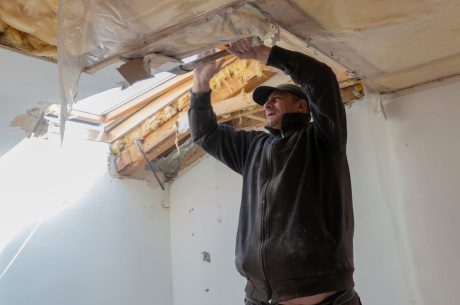Water damage can wreak havoc on any property, leaving behind a trail of destruction and costly repairs. Whether it’s due to a burst pipe, a leaking roof, or a natural disaster like a flood, fast assessment is important to minimize further damage. If you’re going through the process of water damage restoration Greer, SC, understanding the assessment process is key to getting your property back to its former state.
Understanding Water Damage
Water damage occurs when excess water begins to accumulate in areas where it shouldn’t, often due to various causes of water damage, such as plumbing leaks, appliance malfunctions, or natural disasters. This can weaken the integrity of buildings and lead to health risks to occupants. Identifying the extent of the damage is important for effective restoration.
Importance of Water Damage Assessment
A thorough water damage assessment is the first step in any restoration process. It allows contractors to understand the scope of the damage and develop a tailored plan for remediation. Without proper assessment, underlying issues may go unnoticed, which can lead to incomplete repairs and recurring problems.
Initial Assessment Steps
If you have been wondering how to assess water damage, the initial water damage evaluation involves the following steps taken by the restoration contractors:
- Visual Inspection: Begin by visually inspecting the affected area for visible signs of water damage, such as discoloration, stains, or warping of materials.
- Checking for Moisture: Use moisture meters to detect moisture levels in walls, floors, and other surfaces. Pay attention to areas that may be prone to water seepage, such as around windows, doors, and plumbing fixtures.
- Assessment of Structural Integrity: Evaluate the structural integrity of the building by checking for signs of damage, such as sagging ceilings, cracked walls, or weakened supports. Water damage can compromise the structural stability of a building, so identification of any areas of concern is needed.
- Identification of the Source: Determine the source of the water damage, whether it’s a leaky pipe, a roof leak, or a natural disaster like a flood. Understanding the source is crucial for effective restoration and may involve assessing local flood control measures mandated by regulations like the Flood Control Act.
- Documenting of the Damage: Take detailed notes and photographs of the damage to document the initial assessment findings. This documentation serves as a reference point throughout the restoration process and may be required for insurance claims.
Tools and Techniques for Assessment
Different tools and techniques are used to assess water damage accurately.
- Moisture Meters: Moisture meters are the tools for detecting and measuring moisture levels in different materials, such as drywall, wood, and concrete. They provide quantitative data that helps assess the extent of water damage and identify areas that require drying or repair.
- Thermal Imaging Cameras: Thermal imaging cameras detect differences in surface temperatures, allowing contractors to identify moisture accumulation behind walls or beneath flooring. This non-invasive technique is especially useful for locating hidden water damage without causing unnecessary damage to building materials.
- Hygrometers: Hygrometers measure relative humidity levels in the air, helping contractors assess the overall moisture content of the affected area. By monitoring humidity levels, contractors can determine the effectiveness of drying efforts and ensure that conditions are suitable for drying.
- Visual Inspection Tools: In addition to the naked eye, visual inspection tools such as flashlights and magnifying glasses are used to identify visible signs of water damage, such as stains, discoloration, or mold growth. These tools help contractors pinpoint areas that require further assessment and remediation.
- Probing Devices: Probing devices, such as moisture probes or sensors are used to assess moisture levels beneath the surface. These devices provide valuable information about the extent of water damage and help identify areas that may require targeted drying or repair.
Assessing Different Types of Water Damage
Not all water damage is the same, and different types require different approaches to restoration. Water damage is typically categorized into three categories:
Category 1 Water Damage
This type of damage involves clean water from sources such as broken pipes, overflowing sinks, or rainwater. Category 1 water damage brings about minimal health risks and can often be remediated relatively easily.
Category 2 Water Damage
Also known as “gray water,” this type of damage involves water that may contain contaminants or chemicals, such as water from washing machines, dishwashers, or sump pump failures. Category 2 water damage requires precautions because of the potential health hazards.
Category 3 Water Damage
This is the most severe type of water damage, often referred to as “black water.” Category 3 water damage involves highly contaminated water sources, such as sewage backups, river flooding, or water from storms. Category 3 water damage poses significant health risks and requires specialized handling and protective equipment during cleanup and restoration.
Documenting the Assessment
Documenting the assessment is important for record-keeping and insurance purposes. Detailed notes, photographs, and moisture readings should be gathered to provide a detailed overview of the damage. This documentation serves as a reference point throughout the restoration process.
Reporting and Recommendations
Once the assessment is complete, contractors will compile a detailed report outlining their findings and recommendations for restoration. This report may include suggested repairs, estimated costs, and a timeline for completion. Clear communication between contractors and property owners is important to ensure that expectations are met.
Contact PuroClean of Greer for Professional Help
If you’re facing water damage restoration in Greer, SC, don’t hesitate to seek professional help. PuroClean of Greer specializes in water damage assessment and restoration, using advanced techniques and equipment to restore your property before you know it. With our expertise, you can trust that your property is in good hands. Give us a call at (864) 523-6633 or send us a message through our website.




 PuroClean of Greer
PuroClean of Greer